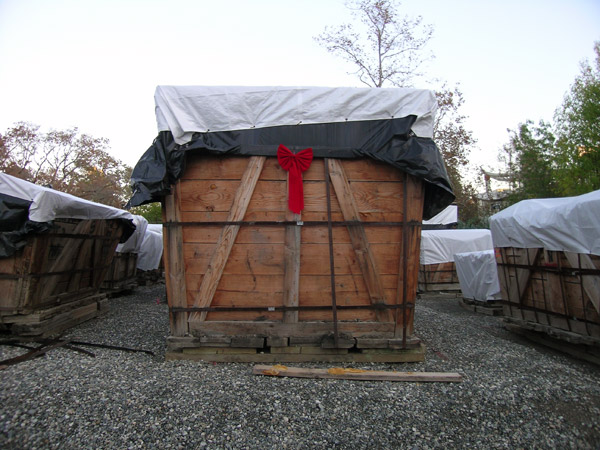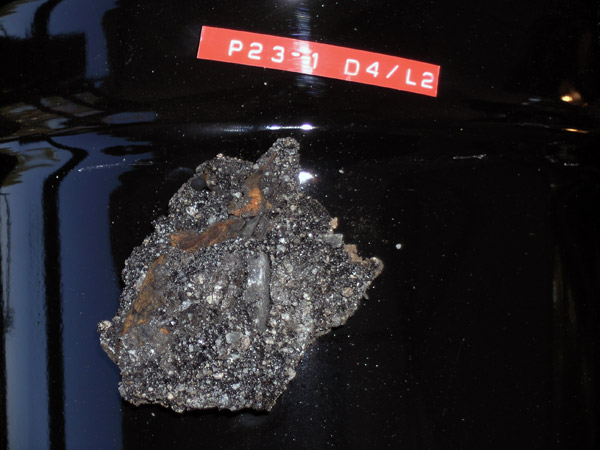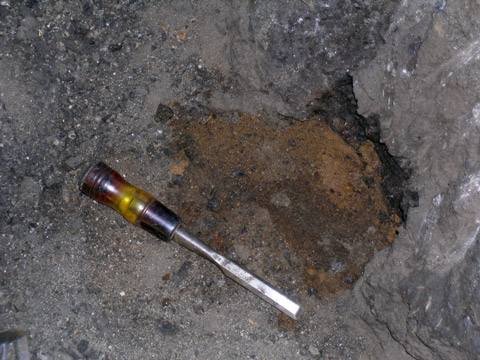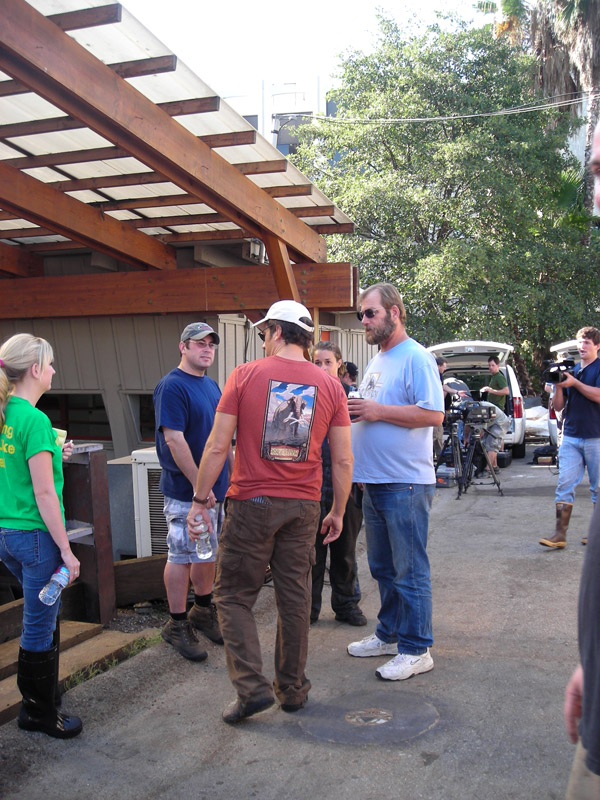Too busy for a proper post, but if you click the photo above, you'll be taken to our flickr site, where I just uploaded about a dozen pictures from the filming of Dirty Jobs. More pictures next week, because friends, paleontology waits for no woman. We've had an extremely productive week, and just two short hours ago, we FINALLY got the North American Lion skull out of deposit 1. And let me tell you, it is a beaut. So once we're done basking in the glory of a job well done, we'll get back to blogging. Cheers!
23 January 2009
update-ish
Too busy for a proper post, but if you click the photo above, you'll be taken to our flickr site, where I just uploaded about a dozen pictures from the filming of Dirty Jobs. More pictures next week, because friends, paleontology waits for no woman. We've had an extremely productive week, and just two short hours ago, we FINALLY got the North American Lion skull out of deposit 1. And let me tell you, it is a beaut. So once we're done basking in the glory of a job well done, we'll get back to blogging. Cheers!
Posted by
akthom
at
3:37 PM
21 January 2009
DIRTY JOBS!

l to r: Kristen Brown, Andrea Thomer, Michelle Tabencki (the happiest girl in the world), Mike Rowe (working the purple bandana like no other), and Laura Tewksbury
We excavators and excavatrices made our television debut last night on the Discovery Channel's totally awesome show, Dirty Jobs! Mike Rowe came by a few months ago to help us with Pit 91 maintenance. Tar pits were glopped, shoring boards replaced, fossils excavated, cell phones inexplicably thrown: in short, a good time was had by all. I have to say, Mike, Dave Barsky, and the rest of the Dirty Jobs crew were the nicest, funniest, and generally raddest film crew we've ever hosted at the pits, so many thanks to them for being great (and for not editing us to look like madwomen) (or rather, editing us so that you can't tell we're really madwomen).
Now. We have a TON of pictures from the filming of the episode, which will be posted to our flickr channel by week's end. AND we have a good amount of incrimintating footage of Michelle, excavatrix and sponge bather extraordinaire, which will hopefully be posted to youtube soonish (provided she lets me...). And AND for those of you that missed it, the episode will be playing again this Friday at 8pm on the Discovery Channel. Set your collective Tivos. And check back on Friday for more pictures and stories and tomfoolery.

go team awesome! l to r: Chris Shaw, Kristen Brown, Trevor Valle, Laura Tewksbury, Aisling Farrell, Michelle Tabencki, Ryan Long, Andie Thomer
Yay!
Yay!
Posted by
akthom
at
12:47 PM
13 January 2009
update

happy non-denominational seasons greetings and new year
It is 85 degrees Fahrenheit in Los Angeles right now. In January. In what is supposed to be the dead of winter. We are mildly confused, but not complaining; digging in asphalt is so much easier in the warm sun! The matrix in two particular grids -- A-1 and A-2 -- has been soft enough to dig through using our fingers. Findings of note:

This jaw is from a small wildcat, most likely a Lynx, per collections manager Christopher Shaw. We don't have that many bones from smaller cats in our collection at the Page Museum for two reasons: 1) these smaller cats were likely solitary, so when they got stuck in an asphalt seep, they got stuck alone -- not with 15 of their closest friends, as with Dire Wolves and Saber-toothed Cats. 2) smaller cats have small bones, and early fossil collectors (during the early 1900s) would have likely passed them over for larger, more obviously interesting fossils like, again, those of the Saber-toothed Cat. This is what's called a collection bias: the arbitrary favoring of one kind of fossil or specimen over another. One of the main goals of the excavation in Pit 91 and with Project 23 is to correct this bias. Thus, we collect and keep everything -- even the stuff that might not seem obviously important at the time. For instance:

In grid A-2/Level 3 I found two bird tibiotarsi (i.e. drumsticks) immediately on top of one another. They're definitely from the same species (but I don't know which one), one tibiotarsus was a left and the other was a right, and they are about the same size. This may be a case of association (two fossils from the same individual animal), or it may be just a really weird coincidence. But it kind of doesn't matter: it's an unusual enough case to warrant thorough documentation. Pictures, notes, and measurements have been taken, and preserved for posterity. I am but a lowly excavatrix -- not a proper paleontologist -- and I haven't the years of schooling necessary to interpret this assemblage. But good data collection will hopefully benefit actual paleontologists of the future, as they dive through field notes and make the interpretations that we excavators couldn't. Ryan, our sole man, noted the following:

The orange bits are a complete oak leaf found from a largely sterile portion of Deposit 1. We've found a large number of plant parts, and a good number of oak leaves in this deposit. We don't know what plant is worth collecting and what isn't, so we try to collect as much as possible. Again, this is something for future scientists to interpret. And it's our job to make sure everything's collected in as complete a manner as possible. Finally, an eagle-eyed volunteer (hi Spencer) spotted the following:

a pile of orange dirt. While this wouldn't be surprising in any other fossil deposit, anything with any hint of color at the La Brea Tar Pits is worth noting. So a sample was collected, notes were taken, and hopefully this will give us some insight into the depositional environment around this particular deposit.
Posted by
akthom
at
4:12 PM
Subscribe to:
Posts (Atom)



